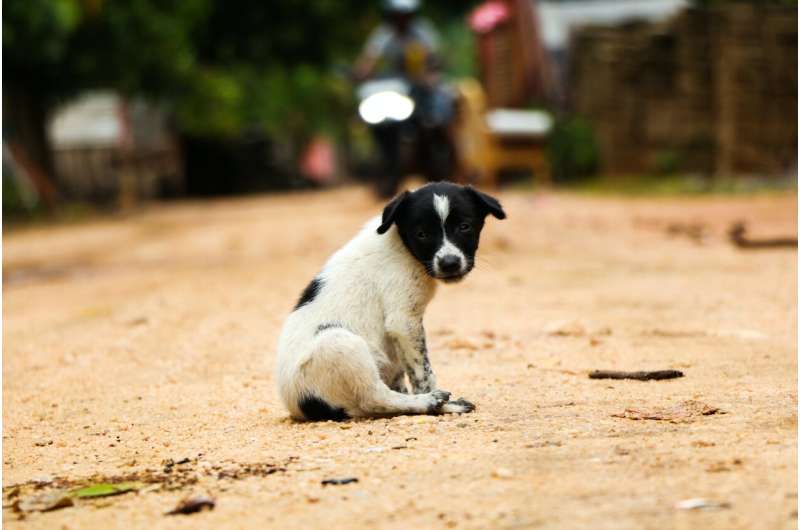This article has been reviewed according to Science X's editorial process and policies. Editors have highlighted the following attributes while ensuring the content's credibility:
fact-checked
proofread
'One Health' surveillance tool proves vital in rapid response to potentially deadly rabies outbreak in India

Scientists have revealed that the use of an animal rescue system—Hawk Data Pro—proved to be a vital "One Health" surveillance tool as part of a rapid response to a potentially deadly rabies outbreak in Pune city, India.
The study, published in the journal CABI One Health to coincide with World Rabies Day (28 September), highlights how systems—such as Hawk Data Pro—can be "modified or adapted to other areas" and help eradicate rabies around the world. The paper is titled "A passive One Health surveillance system to track canine rabies in urban India."
Dr. Abi Tamim Vanak, lead author of the research from the Ashoka Trust for Research in Ecology and the Environment (ATREE) in India, said robust and widely implementable "One Health" surveillance systems are needed to detect and control the spread of zoonotic infectious diseases including rabies.
True burden of rabies
According to the World Health Organization (WHO), the true burden of rabies in India is not fully known but it is believed to cause up to 20,000 deaths every year. Dogs are the source of the vast majority of human rabies deaths, contributing up to 99% of all rabies transmissions to humans.
Between 30 to 60% of reported cases and deaths in India occur in children under the age of 15. This is because bites that occur in children often go unrecognized and unreported. However, rabies is a vaccine-preventable viral disease which occurs in more than 150 countries and territories.
Rapid diagnosis and response
Dr. Vanak said, "Using technological tools coupled with a rapid field response and rapid diagnostics can help in the surveillance of deadly diseases such as rabies, even in densely populated urban areas.
"We show that the adoption of the Hawk Data Pro system as a passive surveillance tool allowed us to document an ongoing outbreak of rabies in a large metropolis in India.
"Such systems can be modified or adapted to other areas as well to meet the surveillance and reporting requirements of the WHO's Zeroby30 strategy to eliminate rabies globally."
Sick animals reported
The researchers used a webline and helpline that reported injured or sick animals to an animal rescue facility to determine possible rabies cases in street animals in Pune city in western India.
Suspected rabid animals were tested using lateral flow assays and this information was used to direct awareness materials on rabies as well as in conducting mass dog vaccinations in areas that reported multiple cases.
Over a four-year period, the scientists received nearly 91,000 calls or reports of which 1,162 were for suspected rabies cases in dogs, and six for other animals including cats, goats and cattle. Of these, 749 dogs and four other animals tested positive for rabies.
Most of the cases were reported from the densely human populated center Pune region. In response, around 21,000 people were provided with educational materials on post-bite management and in the region of 23,000 dogs were vaccinated.
National action plan
The Indian Government's Ministry of Health and Family Welfare, together with the Ministry of Fisheries, Animal Husbandry and Dairying, has created a National Action Plan for dog-mediated Rabies Elimination (NAPRE) to be implemented in India by 2030.
Co-author Neha Panchamiya said, "Strengthening surveillance systems is integral to address the under-reporting of rabies and to achieve the target of eliminating rabies before the end of the decade.
"Helpline and web portal-based notification of animal rabies can serve both human and animal health components.
"The approach can be adapted for continuous One Health rabies surveillance and is well aligned with the newly designed objectives of NAPRE, a plan developed with consideration for intersectoral planning, operational research and based on the One Health approach."
More information: Abi Tamim Vanak et al, A passive 'One Health' surveillance system to track canine rabies in urban India, CABI One Health (2023). DOI: 10.1079/cabionehealth.2023.0022



















